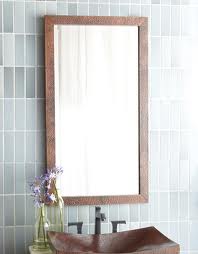How one sees themselves is a very important element, perhaps the most important, in aesthetic plastic surgery. What motivates a patient to come in for surgery and how they judge their surgical endeavors afterwards is what they see in the mirror. We assume that mirrors are accurate reflections of ourselves and there would be no reason to not assume so. Their only inaccuracy in that mirror reflections are reversed, right is left and left is right. That would seem to be trivial but is it?

Why do mirrors flip things right to left? (and not up and down) There are confusing explanations but the one that seems to make the most sense is that the 3-D object seen in a mirror has been flipped along its Z-axis. (Z-axis inversion) Because they are unnatural in nature, Z-axis inversions are hard for our brains to process. Our brain tries to make the most sense of what it sees (the Z-axis inverted image) by imagining that the object is rotated 180 degrees along the Y-axis with respect to our eyes. But it must also see the corresponding X-axis flip which it does as seen in such details as writing and the features on a face. All of this plays into the natural human tendency for right and left handness.
This mirror science does raise the question of what plastic surgery patients are actually seeing…particularly when it comes to issues of symmetry of paired face and body structures that have had surgery. It is not rare that what a patient sees as an asymmetry, before or after surgery, is not always what the plastic surgeon sees.
This made it very interesting to read about a new mirror that has been developed by Dr. Andrew Hicks at Drexel University as reported in Medical News Today. While some novelty mirrors do exist to show non-reversed images, they require the use of two mirrors which is impractical. Dr. Hick’s non-reversing mirror is different in that it is uses just one mirror. I do not really understand how it works but I would view it more than just a novelty. It could have real practical signficance in plastic surgery.
Would patients see their flaws, particularly asymmetries, if they saw an exact image rather than a flipped one? Would they see their postoperative results more or less favorably? An interesting study would be to see how patients compare their facial features, natural or surgically-altered, between a traditional flat plane mirror and a non-reversing mirror.
Dr. Barry Eppley
Indianapolis, Indiana


